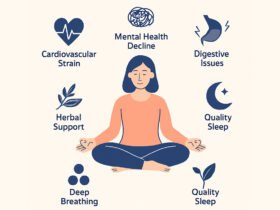Artificial Intelligence (AI) language models have witnessed tremendous growth and innovation, with Chat GPT leading the charge. From the introduction of GPT-3 to the anticipated advancements of GPT-4 and beyond, Chat GPT has transformed the landscape of AI-powered conversations. In this blog post, we embark on a captivating journey, exploring the evolution, advancements, enhanced capabilities, potential applications, and future prospects of Chat GPT. Join us as we delve into the exciting world of AI language models and the impact they have on various industries.
I. The Genesis of Chat GPT:
GPT-3 The emergence of GPT-3 (Generative Pre-trained Transformer 3) marked a significant milestone in AI language models. Powered by deep neural networks and trained on massive datasets, GPT-3 showcased remarkable language generation capabilities. It could comprehend context, respond to queries, and engage in multi-turn conversations with an astonishing level of fluency. The success of GPT-3 set the stage for further advancements in the Chat GPT series.
II. Advancements and Enhanced Capabilities:
- Improved Language Generation: GPT-4 and subsequent iterations of Chat GPT are expected to exhibit enhanced language generation capabilities. These models are designed to generate even more coherent, contextually relevant, and human-like responses. With larger training datasets and refined algorithms, Chat GPT continues to push the boundaries of AI conversation quality.
- Contextual Understanding and Dialog Management: GPT-4 aims to excel in contextual understanding and dialog management. By considering previous interactions and maintaining context throughout a conversation, Chat GPT can provide more consistent and contextually accurate responses. This advancement brings AI conversations closer to the nuanced understanding exhibited by humans.
- Few-Shot and Zero-Shot Learning: GPT-4 seeks to excel in few-shot and zero-shot learning scenarios. Few-shot learning refers to the ability of the model to understand and generate responses with minimal training examples, while zero-shot learning allows the model to tackle tasks it hasn’t been explicitly trained on. These capabilities broaden the scope of applications for Chat GPT across diverse domains.
- Multi-Modal Integration: Future iterations of Chat GPT are anticipated to integrate multiple modalities, such as text, images, videos, and audio, into their conversation capabilities. This multi-modal approach enables more immersive and interactive AI conversations, with the potential to enhance experiences in fields like virtual assistance, customer service, and entertainment.
III. Potential Applications and Impact:
- Customer Service and Support: AI-powered chatbots and virtual assistants leveraging Chat GPT are revolutionizing customer service and support. With the ability to handle a wide range of queries, provide accurate information, and offer personalized assistance, Chat GPT enhances customer experiences and reduces response times.
- Content Creation and Editing: Chat GPT’s advanced language generation capabilities find applications in content creation and editing. Writers, journalists, and content creators can leverage AI-generated suggestions and improvements to enhance their work. Chat GPT can assist in generating blog posts, articles, and even creative writing pieces, augmenting human creativity and productivity.
- Language Learning and Tutoring: AI language models like Chat GPT have the potential to revolutionize language learning and tutoring. Through interactive conversations, language learners can practice speaking and writing skills, receive feedback, and engage in personalized language instruction. Chat GPT can adapt to learners’ proficiency levels and cater to their specific needs.
- Personalized Recommendations and Assistance: AI-powered conversational systems can leverage Chat GPT to provide personalized recommendations, suggestions, and assistance. Whether it’s recommending products, suggesting movies or books, or offering travel advice, Chat GPT can analyze user preferences and context to deliver tailored and relevant information.
- Healthcare and Mental Health Support: Chat GPT holds promise in the healthcare industry, aiding in medical diagnosis, providing health information, and offering mental health support. AI language models can help patients gather relevant medical information, understand symptoms, and provide initial guidance while ensuring the importance of professional medical care.
IV. The Future of AI-Powered Conversations:
The journey of Chat GPT from GPT-3 to GPT-4 and beyond opens up exciting possibilities for the future of AI-powered conversations. As language models continue to advance, we can anticipate more natural, context-aware, and emotionally intelligent interactions with AI systems. However, ethical considerations, such as bias mitigation, privacy, and transparency, will play a crucial role in shaping the responsible development and deployment of AI conversational systems.
Conclusion: The evolution of Chat GPT from GPT-3 to GPT-4 and beyond signifies the rapid advancements in AI language models. Enhanced language generation, improved contextual understanding, and multi-modal integration are among the key advancements propelling AI conversations to new heights. With applications spanning customer service, content creation, language learning, personalized recommendations, healthcare, and more, Chat GPT continues to shape various industries. As we navigate the future of AI-powered conversations, it is essential to embrace responsible development and utilization of AI systems, ensuring they augment human capabilities and enhance user experiences. The journey of Chat GPT is an ongoing one, promising an exciting future where AI language models and human interaction blend harmoniously to create transformative conversations.











Leave a Reply